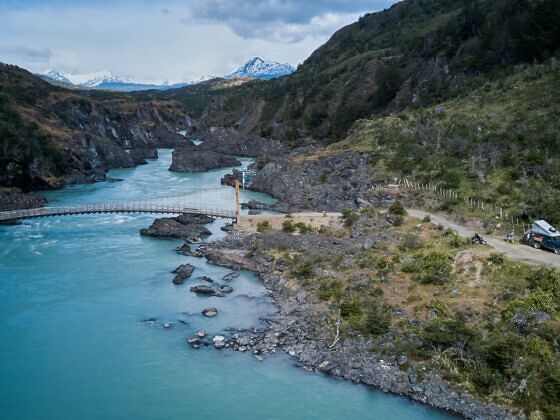IN 2007, when I was on the Carretera Austral (southern highway) in Chile, I was admonished by a Chilean traveler to go check out the Río Baker, because it would soon be dammed. Five years later, the river still flows free.

Matador has been following the story since the protests in May 2011, through the Supreme Court’s approval of the project. We also sent a team of journalists down there for a ground level investigation into public opinion on the dams as well as efforts towards conservation. Their work, an original webseries called TRAWEN, is currently in production and will be published here at the network throughout this summer.
To see photos of what could be lost if the project goes through, see this photo essay sourced from several world-class photographers.
Many people here in Chile have thought that with regional and Supreme Court approval, the project was as good as done. But with environmental impact statements (EISs) being the next step, a May 30th memo from one of the stakeholders has left open to question when those EISs might get done.
Bernardo Larraín Matte, the president of the board of directors of Colbún (which has a 49% stake in the dam project), filed the memo to Chile’s Finance Ministry with SVS (Superintendente de Valores y Seguros, Chile’s version of the SEC) indicating that until some changes are made to energy policy, the project is going nowhere.
The memo, available here (PDF in Spanish) said that the company has decided to indefinitely hold off on developing the EISs necessary for the project to go forward. The reason behind this, he says, is the lack of a national energy policy which provides an adequate framework to “develop energy projects of this magnitude and complexity.”
He goes on to call for executive and legislative powers to make the institutional and regulatory changes necessary for this type of project to go forward.
On one hand, EISs are based on in-depth analysis and research on what would happen if the dams were built (and in this case, if the dams were built, and separately, if the electrical towers and lines were installed). They are a costly endeavor, and this likely figures into Colbun’s reticence to move forward, when they are not assured that the project would be approved after the studies were done.
But the memo also says it will be the responsibility of the government to make institutional and regulatory changes, which intimates that Colbún is hoping for something much greater than assurances that the project will be approved. It sounds like they’re looking for an overhaul in how energy policy is handled in Chile, up to and including partial nationalization of the electrical industry.
The Finance Minister, Felipe Larraín recently said that his ministry has formed a committee which has worked out a strategy for 2012 to 2030, with the goal of solving the energy problem not just for this administration, but for Chile.
For now, the project is on hold and the Baker and Pascua rivers remain untouched, and what happens next with Hidroaysén, and the future of the electrical industry in Chile depends on government response. As many as 3/4 of Chileans oppose the project, but in the region of Aysén, the approval rate is much higher. Stay tuned for more soon.